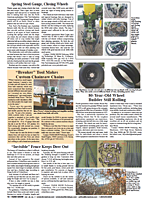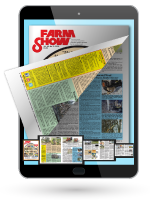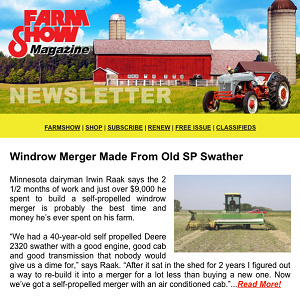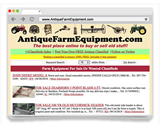2025 - Volume #49, Issue #4, Page #11
[ Sample Stories From This Issue | List of All Stories In This Issue | Print this story
| Read this issue]
Satellites And AI Zoom In On Farming Practices
 |
Stanford’s Regulation, Evaluation and Governance Lab (RegLab) is one of those entities. RegLab partners with government agencies to design and evaluate programs, policies, and technologies that modernize government.
RegLab’s Stanford home allows it to leverage state-of-the-art advances in machine learning, artificial intelligence and causal inference to build a bridge between government agencies and academic frontiers in data science, particularly in the area of environmental compliance. A portion of its work involves using machine learning and satellite imagery to identify potential noncompliance with environmental regulations, which can then be prioritized for review by regulators.
An example is a recent project that attempted to identify manure spread on frozen or snow-covered ground in Wisconsin. By state law, Concentrated Animal Feeding Operations (CAFOs) aren’t allowed to spread manure during winter months due to the large scale at which they operate and the high risk of runoff polluting water sources.
RegLab completed the project using imagery from Planet Labs, a private satellite company that provides access to images through paid subscriptions. Its images have a resolution of about 3 meters per pixel, meaning broad patterns can be seen, but not finer details.
The AI model scanned daily satellite images of CAFOs during the winter and learned to recognize manure spreading patterns by analyzing 1,813 manually labeled examples from winters between 2018 and 2020. When it detects anomalies that could represent manure spreading, it labels them and assigns a confidence score. Any detection above a chosen confidence threshold gets flagged for human review.
“The model cannot always distinguish manure from other dark features in the snow, such as tree lines, hedges or solar panels,” says Data Scientist Mihir Bhaskar. “This is why we emphasize human verification as a key step. The model provides a useful first alert, but it isn’t perfect.”
To determine the amount of manure, it estimates the identified area by drawing a box around it.
“To clarify, our model by itself cannot assess the legality of the spread. It only attempts to detect whether manure has been spread,” Bhaskar says. “It’s up to state regulators to determine legality, relative to what has been reported and/or approved.”
Bhaskar hopes tools like these will support regulators and environmental groups working together for more consistent monitoring and compliance activities.
“The next steps depend on how these groups choose to use the information,” he says.
“We make all our tools, code and research papers publicly available to support broader learning and adoption. We partner with public agencies, nonprofits and other organizations to test these tools in real-world settings.”
RegLab has also worked on several satellite imagery projects to detect other environmentally impactful activities, including industrial runoff, factory farms, aquaculture and accessory dwelling units.
Contact: FARM SHOW Followup, Stanford RegLab, Mihir Bhaskar, 559 Nathan Abbott Way, Stanford Law School, Stanford, Calif. 94305 (mihirb@reglab.stanford.edu; https://reglab.stanford.edu/).

Click here to download page story appeared in.

Click here to read entire issue
To read the rest of this story, download this issue below or click here to register with your account number.




